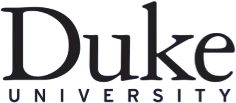Employee ExperienceEmployee Engagement
Welcome a New Employee: Creating a Supportive Environment to Inspire Innovation
TABLE OF CONTENTS
Welcoming a new employee is more than a friendly greeting; it is a strategic decision to set someone up for success and help the team move faster. A warm welcome shapes first impressions that stick. Research shows judgments form in about a tenth of a second, and these initial assessments color how people interpret every moment that follows. In hiring, impressions matter, and a clear start has a positive impact on the team.
When leaders send a clear signal, “You matter, and we’re ready for you,” new hires feel valued, speak up sooner, and share ideas that benefit the group. Small, early actions support innovative contributions later. The goal is simple: help someone feel like part of the team while providing what they need to contribute immediately. A timely welcome message and a public “welcome to the team” note help the whole team see the arrival and respond in kind, which supports employee engagement from day one.
Pre-boarding: Make the Process Easier From Job Offer to Day One
Pre-boarding is the quiet engine of a smooth transition. Once a job offer is accepted, send an introductory note and a welcome message within 24 hours. The welcome letter should confirm work hours, dress code, key contacts, and what to expect on the first day. It should also include links to the employee handbook and ensure the pages load without login issues. Combine all paperwork onto one simple page so new employees can complete it in less than half an hour. Include both new hire paperwork and hire paperwork in one place, and make the process easier by using plain language and clearly stating where to go for help.
An early note about the company culture helps significantly. Explain how decisions are made, how teams share updates, and how feedback works. Define what “good” looks like in the first 30, 60, and 90 days. Share how often follow-up meetings happen and who leads them. This clarity reduces stress and makes a seamless start more likely. Research linking structured onboarding to higher retention and faster productivity supports this early start. The sooner you help the person feel welcome and prepared, the sooner they will contribute to the team as part of a dynamic team that values collaboration.
Manager Prep Checklist (48 hours before start)
In the final two days, managers should confirm the following preparations are complete:
- System Access: Ensure all necessary accounts and permissions are active
- Hardware Preparation: Set up the employee’s computer, phone, and other required equipment
- Buddy Assignment: Assign a peer buddy and schedule introductory meetings on the calendar
- Team Introduction: Post a short biography in the team’s communication channel to introduce the new person with a warm welcome
When these steps are complete, the new colleague can hit the ground running, and the entire team sees that their time is valued. This is an exciting time for both the new employee and the existing team members who will benefit from fresh perspectives.
Day One Playbook: A Big Welcome With Open Arms
Day One should lower anxiety and build momentum. Greet the person in person or on video with a sincere welcome. Ensure their workspace is ready, accounts work, and someone is available to help them log into systems. A short tour helps them find the tools they will use daily. Keep the morning focused on people. New employees want to meet their manager, see the team, and understand the purpose behind the work. A visible welcome message that says “welcome to the team” helps the entire office notice the start and offer help.
A good Day One includes a morning team meeting. Introduce everyone, restate quarterly goals in plain language, and explain what the group is building. Cover security and IT basics, then assign a small, scoped task that fits the new role and the new position. A short task creates an early win and shows how work moves from an idea to completion. Share lunch if possible, and close with a brief check in to review what went well and what comes next. When done well, this creates a positive experience that new hires remember long after their first day. A second welcome message at day’s end can thank the team for support and remind everyone where to find the plan.
To make the welcome visible, post a message on the internal network that begins with “Welcome to the team,” so people spot it and say hello. This cue sets a friendly tone and encourages peer team messages. When managers and peers send these signals, new hires understand that their presence matters, and they engage faster. This approach boosts team morale and speed. Studies have noted that a simple manager checklist sent before Day One can improve a new hire’s productivity by approximately 25%, which delivers a clear positive impact to the team.
Weeks 1–4: Orientation, Training, and Check-Ins
The first four weeks create the foundation for success. An effective onboarding program should blend employee orientation, new hire orientation, hands-on practice, and regular touchpoints to give new team members confidence. A short hire orientation session on Day One, followed by a clear training process, helps a new employee see how the team works.
Week-by-Week Cadence
A structured cadence maintains a steady start and shows new hires how to ask for help.
- Week One: Focus on orientation, meeting colleagues, and accessing tools, complemented by brief daily touchpoints. This week should also include an introduction to the training process so the team and the new hire share the same path.
- Week Two: Shift into training that moves from observing to doing, with the new colleague working alongside a mentor. If needed, repeat any new hire orientation elements to fill gaps.
- Week Three: Assign a scoped project with senior review to expand responsibility while maintaining a safe learning environment for the team and the new team member.
- Week Four: Host a formal review, update goals, gather feedback in both directions, and agree on growth steps for the next quarter so the team stays aligned.
This simple, repeatable approach helps a new employee build networks, learn faster, and stay involved with the team.
Why Buddies Matter
Buddies answer small questions quickly and share the team’s unwritten rules. Microsoft data shows that new hires who met their buddy more than eight times in the first three months reported 97% satisfaction with the buddy’s help. A good buddy catches issues early and can pass them to managers before they grow. As a result, new hires feel included, stay engaged, and ramp up faster. The buddy also helps the team by showing how decisions move, which keeps the new role clear.
Culture & Connection: Welcome Messages for New Hires
Words create a sense of belonging. A great welcome message is short, personal, and useful. It should extend a warm welcome, name the manager and buddy, and point to the first steps for getting help. If the employee has a strong track record, consider adding “your reputation precedes you” to boost confidence. Close with best wishes to set a warm tone. These messages make the person visible to the entire team and invite replies from peers, building social ties faster across the team.
Leaders should keep an archive of message examples in email and chat. Managers and peers can reuse these formats while adding a personal touch. Store welcome messages for new employees in a shared folder so people can copy a style that works. Keep another set of welcome messages for new managers and specialists if needed, so the team has options. When messages follow a simple pattern, the office knows what to expect and can easily add their own notes. This practice lowers the workload for managers while keeping the personal touch intact.
What a Great Welcome Message Looks Like
The best note sounds human, not templated. It starts with a friendly greeting, the exact phrase “welcome to the team,” names the role, explains where to find help, adds a personal detail, thanks the person for joining, and wishes them well. Keep it brief so people read it. A second welcome message can share examples that peers can copy, keeping the tone warm across the team. In groups that prize innovation, these signs of care help people speak up sooner and share fresh ideas without hesitation. Over time, a consistent welcome message style becomes part of company culture and helps the team stay aligned.
Channels and Consistency
Use email for formal welcome messages and archive them for reference. Use chat for quick, informal notes and a fast welcome message for visibility. If it fits your culture, allow light meme sharing to help colleagues feel at ease and to keep the team’s spirit high. When leaders keep the communication flow steady, new people can better understand the team’s communication style and work pace. Pick a channel for specific updates and stick with it. If the first team meeting happens every Monday, write it the same way on the calendar so new members do not have to guess. Clear channels help the enitre team and the new team work as one unit.
Innovation Boost: Fresh Perspective and Fresh Ideas
New hires bring a fresh perspective that long-time employees might miss. Invite them to share two ideas in the first two weeks, then review those ideas with a senior team member. Treat every suggestion with respect and look for small pilot projects that are achievable in days. When a new member sees their idea acted upon, they feel trusted and continue to contribute. Over time, these early actions help the group reach new heights, as people learn that small tests can lead to bigger wins for the team. Publicly thanking them at the next meeting turns good experiences into team norms and signals that the team values initiative.
The Science Behind Idea-Safe Teams
Psychological safety is a critical performance condition. Google’s Project Aristotle research highlighted psychological safety as the top factor in effective teams. When people believe they can ask questions and share innovative ideas without risk, creative concepts surface earlier. Academic work has repeatedly linked psychological safety to learning and performance outcomes. Leaders support this by modeling curiosity, admitting mistakes, and praising smart experiments, even when they do not succeed. This approach is how teams go from good to great and why a welcome program is part of the innovation story for the team and the new team.
Turn Early Curiosity Into Outcomes
Ask new employees to note two process improvements and one product idea by the end of their second week. Meet for 15 minutes to choose one to test. Keep tests small, involve one partner team, and share the learnings the following week. When results are visible, teams see that ideas lead to action and that the team will back them. This pattern helps people believe their voice matters and leads to faster learning, better service, and a healthier pipeline for change. Over time, this steady rhythm can create incredible things for customers and all the great things leaders hope to see in a high-performing team.
Metrics & Risks: Measure What Matters
Leaders should measure what counts on a monthly basis. Time to productivity is a powerful metric; it can be the first deliverable, customer call, or accepted analysis. Track 90-day retention and first-year turnover. Up to 20% of turnover happens in the first 45 days, making early signals critical. Run engagement pulse surveys after weeks two and six. If scores are low, intervene quickly. Run onboarding surveys to catch problems that are blocking progress. Ongoing surveys can support process changes that improve employee experience and speed, and they show the team that leadership listens. A brief section that captures employee feel—confidence, clarity, and connection—adds helpful context.
Work Institute estimates that turnover costs about a third of an employee’s annual salary when combining direct and indirect costs. That figure includes recruiting, onboarding, lost output, and manager time. Helping hires feel included and productive protects this investment and improves employee engagement across the team.
Metrics the C-Suite Should Review
Time to productivity shows how fast new hires contribute. Ninety-day retention reveals if the welcome process is effective. Engagement pulses indicate support levels. If these numbers are off, look for patterns such as unclear meetings, missing buddies, or skipped one-on-ones. Fix the inputs, and the outputs will follow. Resources from the Society for Human Resource Management point to these measures because they are easy to track and meaningful for the team and the business.
Common Risks and Fast Fixes
- Information Overload: Overloading a new hire on Day One makes people tune out; move long reading materials to the pre-boarding phase.
- Unclear Roles: Ambiguous roles slow down the ramping-up process. Share one-page role cards and confirm understanding in manager one-on-ones.
- Silent Weeks: A lack of communication creates doubt. Set weekly buddy meetings for the first month to ensure consistent contact.
Pay close attention to the first 45 days, when early turnover risk is highest. Several credible sources note that a large share of early turnover falls within this window, making it a prime time to act for the team.
Templates & Scripts: Copy-Ready Messages
Templates save time and maintain quality. A Day-One email starting with “We are so excited to welcome you to the team at [Company Name]” helps new employees feel seen. Include the schedule, help links, and best wishes. Manager chat posts can add mentor names and lunch invites. Peers can send big congratulations with brief introductions and offers to connect. Keep a shared note with three to five templates that teams can personalize. These templates should include a welcome message, a follow-up welcome message for the afternoon, and a brief script for a chat “hello,” so team messages stay consistent.
Keep sentences short and friendly. Use the new employee’s name. For cross-team positions, explain how others can help initially. Repeat the phrase “welcome to the team” where it fits so the message is easy to spot. A small library under the company name account prevents reinventing the wheel and ensures timely welcomes. When a company keeps message examples ready, managers do not have to start from scratch each time they hire someone. This system helps new hires feel seen without delay and keeps the process simple for busy leaders, while encouraging messages for new employees across the team.
What to Include in Each Template
Include a clear greeting, a welcoming phrase, the first-day plan, and an invitation to ask for help. Add one line about the new hire’s unique skills or past wins to show respect. Mention the new role so expectations are clear. Close with best wishes and sign with a real name. This makes the person feel like a valuable asset while providing the necessary links and contacts they need to start fast. You can also add one sentence that says, “Welcome to the team; your new role starts with a short task today,” which sets a confident tone for the team.
Conclusion: A Long and Successful Journey
A strong start turns a new job into a successful journey. The steps are simple yet powerful: send clear welcome notes, prepare access and tools, greet new hires with open arms, and hold a kickoff session that explains purpose and goals for the whole team. Maintain regular touchpoints during the first month so the new team member always has a clear path forward. Request ideas, offer public thanks, and keep communication channels simple so work can flow for the team.
These habits build on each other. First impressions shape trust. Warm welcomes encourage people to speak up. Early wins build confidence. Buddy time speeds up learning. Clear metrics focus leaders on results. The outcome is a company with smooth transitions, cohesive teams, and a culture that invites innovative ideas. Make these steps part of your business, and your teams will reach new heights, accomplish amazing things, and create lasting value. That is how you welcome a new employee well and start a new journey that serves the team for the long term.






















